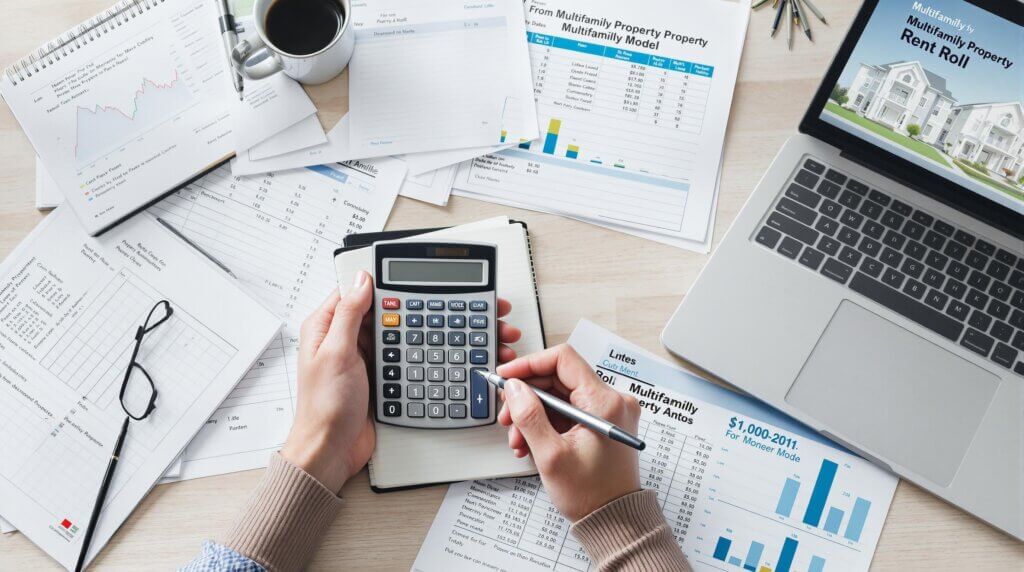
Making a smart real estate investment starts long before closing day. The true value of a property lies not just in its location or aesthetic appeal, but in its financial and strategic potential. Whether you’re evaluating a multifamily development opportunity or a single acquisition, knowing how to analyze a real estate deal is critical to long-term success.
At Goodin Development, we believe that informed decisions yield profitable outcomes. Here’s a step-by-step guide to evaluating a real estate investment deal with confidence and clarity.
Before diving into numbers, it’s essential to define what success looks like for you. Are you focused on cash flow, long-term appreciation, or a mix of both? Do you plan to hold the property or reposition and exit in a few years? Your investment goals will shape every decision you make, from the market you target to the financing strategy you adopt.
Clarifying your strategy upfront—whether you’re pursuing value-add opportunities or stabilized income-producing assets—ensures alignment throughout the evaluation process.
The old real estate adage “location, location, location” still holds true. A strong investment starts with a deep understanding of the property’s market. Key factors to evaluate include:
Markets with positive demographic trends and economic momentum are generally safer bets, especially for multifamily investments. Look for areas with sustained rental demand and low volatility.
Once a promising location is identified, assess the property’s physical attributes. This includes age, structural condition, building systems (HVAC, plumbing, roofing), and layout efficiency. Renovation needs can represent both risks and opportunities—value-add properties may offer higher returns but come with greater upfront costs.
Be sure to request inspection reports, maintenance records, and capital expenditure (CapEx) history to understand the short- and long-term property needs.
The next step is to examine the property’s financial performance. Request a trailing 12-month profit and loss statement (T12), current rent roll, and a balance sheet if available. Key metrics to review include:
Ensure expenses are normalized—some sellers may understate costs to inflate NOI. Compare the current rent roll against market rents to identify any income upside.
With clean financial data, you can calculate vital metrics that help determine the deal’s attractiveness:
These metrics give you a more holistic view of the deal’s viability and help you compare it to other investment opportunities.
Even well-researched deals can run into unexpected challenges. A sensitivity analysis helps you test various scenarios—such as rent declines, increased vacancies, or interest rate hikes—to understand how the investment performs under stress.
By modeling best-case, base-case, and worst-case scenarios, you’ll gain a clearer understanding of risk and resilience. This approach helps protect your downside while uncovering the true upside potential.

How you finance a deal significantly impacts returns. Evaluate your loan options, including interest rate, amortization period, and prepayment penalties. Consider whether fixed or variable rates are more appropriate given your hold timeline and market outlook.
Also factor in loan-to-value (LTV) ratios and required reserves. Using the right level of leverage can amplify returns, but overleveraging increases exposure—especially in markets with shifting interest rates.
Every smart investment includes a clear exit strategy. Ask yourself:
Value creation is key—whether through improving operations, upgrading units, or enhancing curb appeal. These actions can boost NOI and lead to a higher valuation, giving you multiple exit options with strong returns.
Even if the numbers look good, comprehensive due diligence is non-negotiable. Legal reviews, environmental assessments, zoning compliance, and title searches are essential before finalizing any deal. Partnering with experienced professionals—brokers, attorneys, and property managers—can uncover hidden issues and protect your investment.
If you’re new to the space or tackling a complex transaction, aligning with a trusted development partner like Goodin Development adds a layer of insight and credibility to your process.
Evaluating a real estate investment deal requires more than spreadsheets and projections. It demands a clear strategy, market knowledge, financial discipline, and an eye for opportunity. At Goodin Development, we’ve built our business on understanding every angle of the deal—from due diligence to development execution.
If you’re ready to invest in multifamily real estate or need help evaluating a specific opportunity, contact us today. We’re here to help you identify strong investments and build lasting value.
This site is protected by reCAPTCHA and the Google Privacy Policy and Terms of Service apply.
Web design by Webisserie
No Offer of Securities—Disclosure of Interests. Under no circumstances should any material on this site be used or be considered as an offer to sell or as a solicitation of any offer to buy an interest in any investment. Any such offer or solicitation will be made only by means of the confidential private offering memorandum relating to the particular investment. Access to information about the investments are limited to investors who either qualify as accredited investors within the meaning of the Securities Act of 1933, as amended, or those investors who generally are sophisticated in financial matters, such that they are capable of evaluating the merits and risks of prospective investments. Past performance is not indicative of future results. All investments have risk and we strongly recommend you seek professional guidance before making any investment.